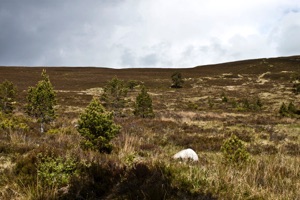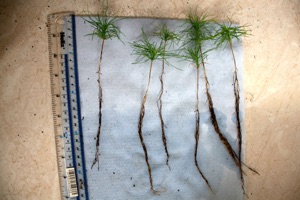Predicting impacts of climate change at species range edges

The distributional limits of species are frequently strongly determined by climate. Rapid changes in climate are disrupting environmental conditions throughout species ranges, with the most dramatic effects predicted to occur at the range edge. Changes in individual growth, survival and reproduction lead to population expansion or decline and induce range shifts, both at altitudinal and latitudinal limits of the distribution of a species. In this study, we are assessing the capacity for population expansion in altitude and latitude as a consequence of climatic change and evaluating the likely range contraction at species lowermost/southernmost distribution limits. We also aim to analyse discrepancies and similarities between altitudinal and latitudinal range shifts, given that range shifts are often reported in mountain areas but less frequently in the lowlands.
This research combines controlled environment experimental manipulation of growing conditions in of Scots pine (Pinus sylvestris) populations from the geographic limits of the species with field-based assessment of the performance of Scots pine and common juniper (Juniperus communis) across their altitudinal and geographical ranges. Controlled environment study is assessing ecological and physiological characters to look at emergence, morphology, growth and drought susceptibility.
Experimental manipulation of drought and temperature in Scots pine using controlled environment chambers
Related publications
Matías L, Jump AS (2015). Asymmetric changes of growth and reproductive investment herald altitudinal and latitudinal range shifts of two woody species. Global Change Biology, 21, 882-896
Matías L, González-Díaz P, Jump AS (2014). Larger investment in roots in southern range-edge populations of Scots pine is associated with increased growth and seedling resistance to extreme drought in response to simulated climate change. Environmental and Experimental Botany, 105, 32–38
Matías L, Jump AS (2014). Impacts of predicted climate change on recruitment at the geographical limits of Scots pine. Journal of Experimental Botany, 65, 299-310
Matías L, Jump AS (2012). Interactions between growth, demography and biotic interactions in determining species range limits in a warming world: the case of Pinus sylvestris. Forest Ecology and Management, 282, 10-22
Hampe A, Jump AS (2011). Climate relicts: past, present, future. Annual Review of Ecology, Evolution, and Systematics, 42, 313-333.
Jump AS, Mátyás C, Peñuelas J (2009). The altitude-for-latitude disparity in the range retractions of woody species. Trends in Ecology and Evolution, 24, 694-701.


Filed-based research is looking at growth rate and its interannual variability, together with fruit production, establishment and the age structure of individuals within natural populations. We are also looking at biotic interactions through assessment of parasite damage across the range of these species. Overall, this work will allow us to understand the impacts of current changes in climate on population performance in these species and the implications for their future distribution. The work is funded by the European Union through a Marie Curie IEF Fellowship to Luis Matías Resina.

Initial morphological characterisation of excavated Scots pine seedlings from controlled environment plots

